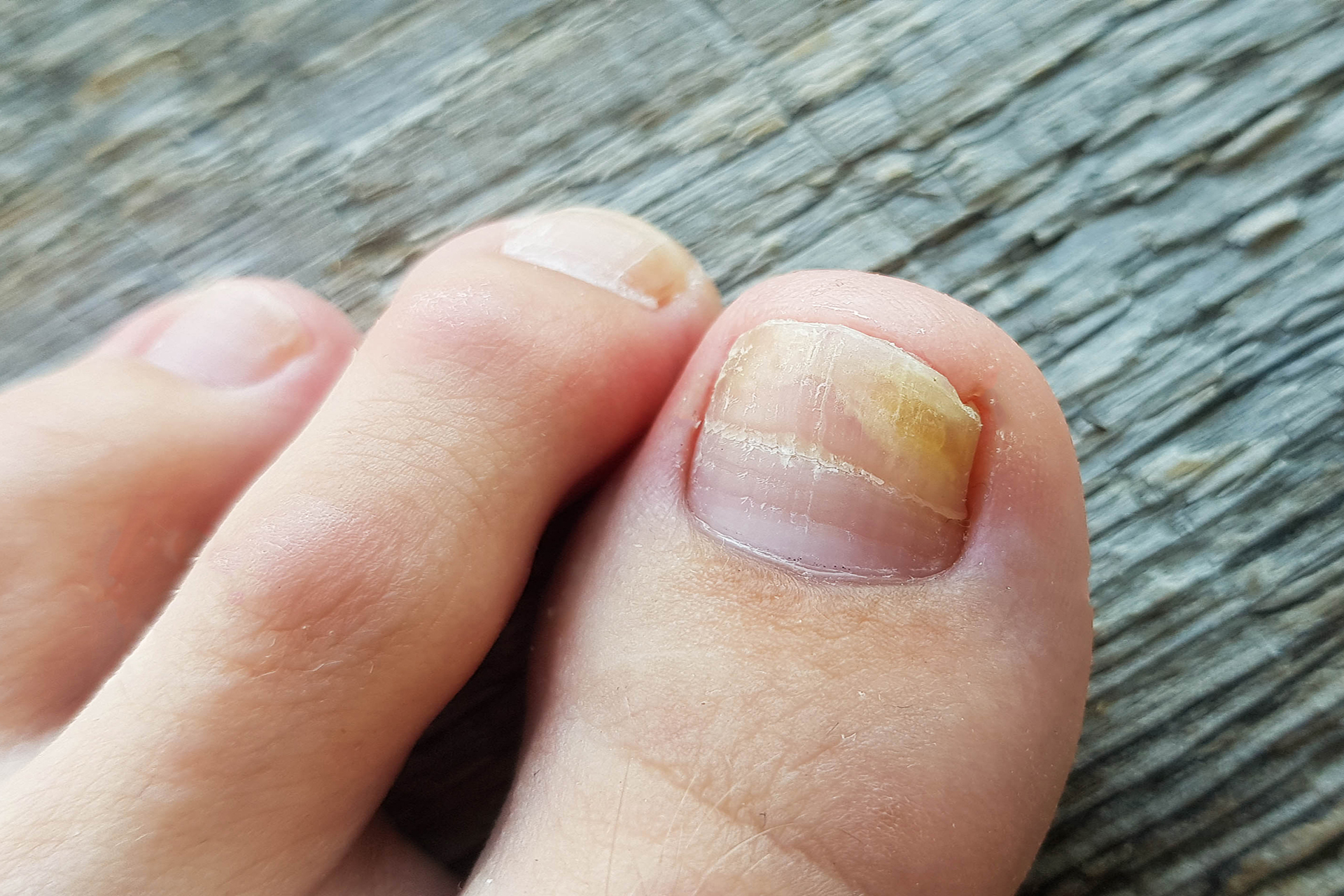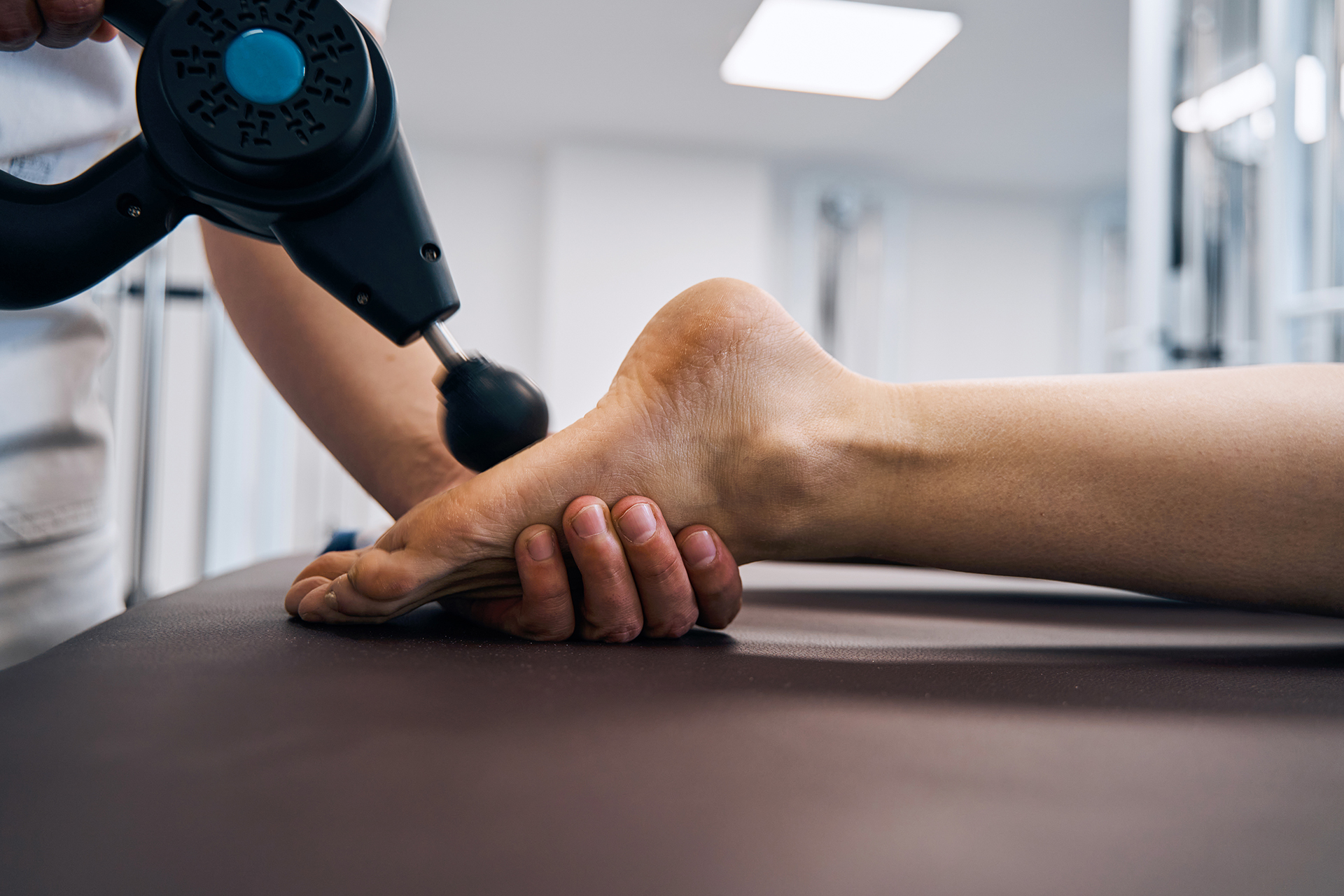What Is A Fungal Nail Infection?
The human foot is the perfect environment for growing fungus – warm, dark, and often damp. These fungi, which normally live harmlessly on the skin, can multiply under certain conditions and cause infections. Fungus under toenail infections, also known as onychomycosis, occur when dermatophytes – microscopic organisms that feed on keratin – infiltrate the nail bed. These opportunistic organisms thrive in the space between the toenail and skin, creating a persistent infection that can be hard to eliminate.
The condition affects around 10% of the general population, with prevalence increasing to nearly 50% in people over 70. Despite its commonality, undernail toe fungus is poorly understood by many sufferers, who often delay treatment until symptoms become severe or uncomfortable.
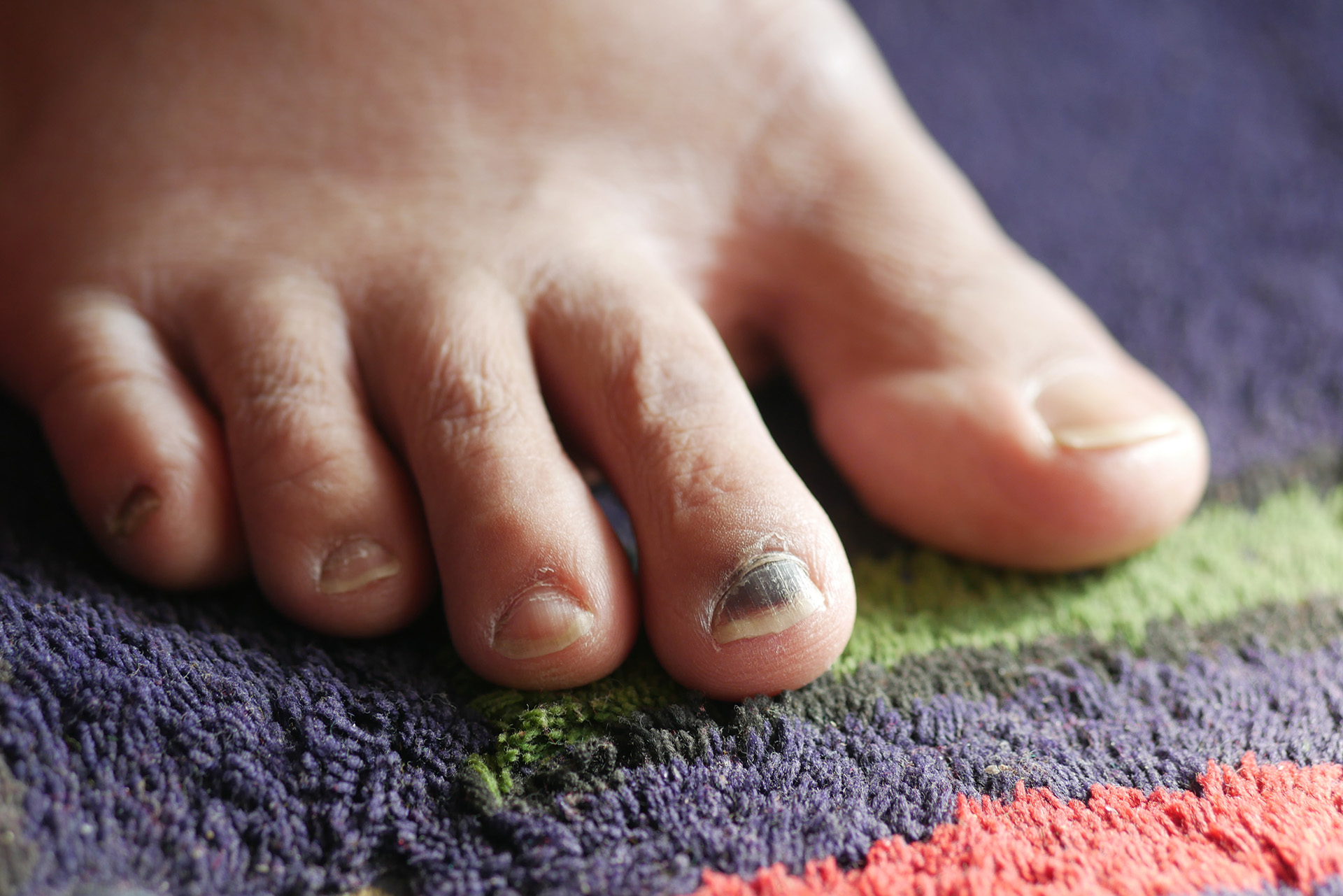
What Causes Fungus Under Toenail?
Most fungal nail infections are caused by fungi that cause athlete’s foot to infect the nails. The fungi that cause these infections enter through small, invisible cuts in the skin, or through separations between the nail and nail bed. Common risk factors include frequent exposure to damp environments like public pools or showers, tight-fitting shoes that create warm, moist conditions and compromised immune systems. Diabetics are also at higher risk as reduced circulation to the extremities creates favourable conditions for fungal growth while lowering the body’s ability to fight the infection.

Recognising the Signs: The Symptoms of Toe Fungus Under Nail
Early detection makes all the difference for treating under-nail toe fungus. Unfortunately, it often starts asymptomatically with subtle changes that may go unnoticed. The first visible sign usually appears as a white or yellow spot under the tip of the toenail. As the infection progresses, more symptoms become apparent, such as the following:
- Discoloration of the nail from white or yellow to brown or even green in extreme cases
- Thickening of the nail, making it hard to trim
- Crumbling or ragged edges
- Distortion of the nail’s shape
- Separation of the nail from the nail bed (onycholysis)
- A slight odour
- Pain or discomfort when wearing shoes or walking
Getting a nail sample for testing is essential for infected nails to ensure accurate diagnosis and treatment. Without intervention, nail fungus infections rarely resolve on their own. Instead, they get worse over time and can spread to other toenails, fingernails, or even to other people you come into contact with.
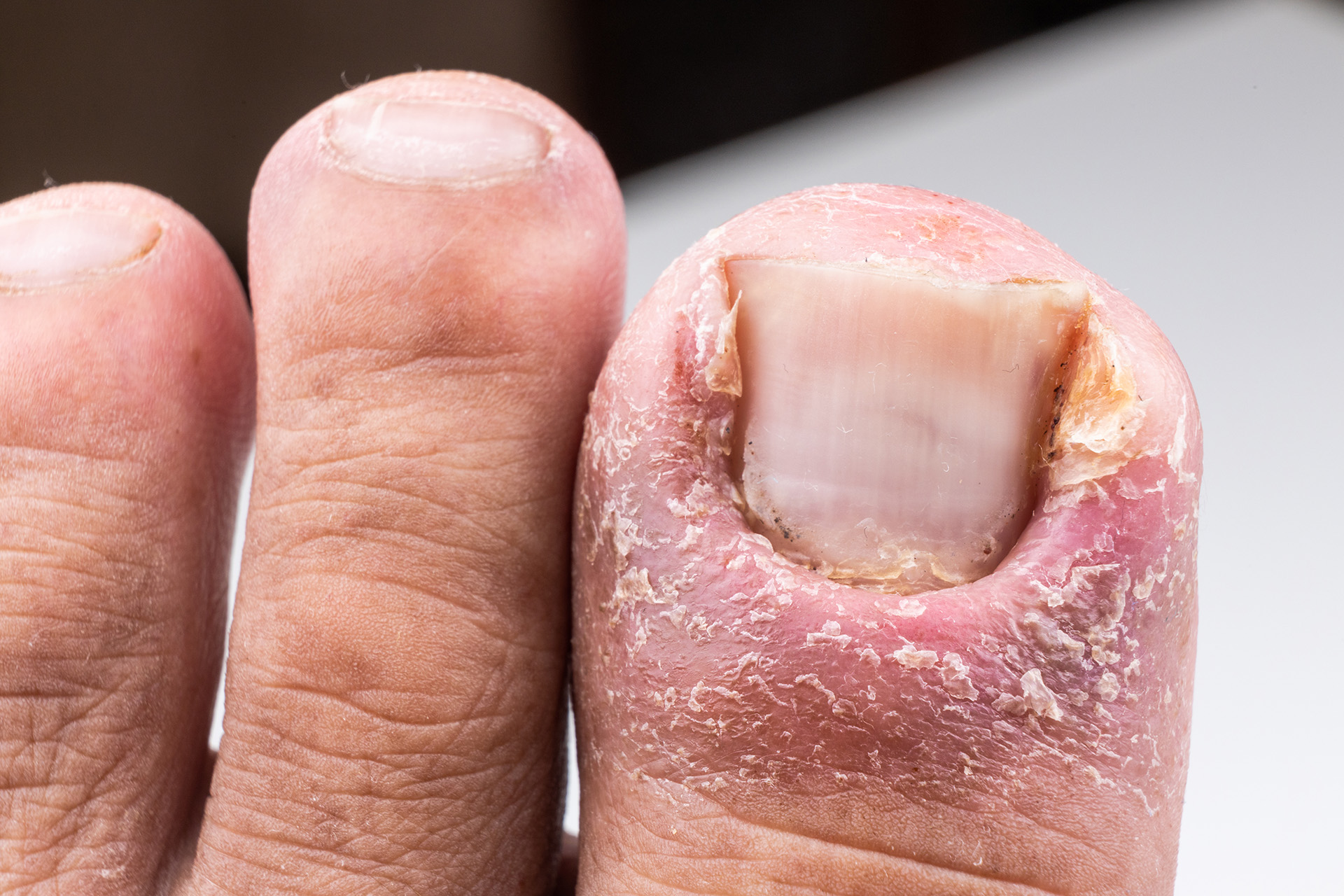
Complications and Health Conditions
Ignoring a fungal nail infection can lead to several serious complications and health issues. One of the most common outcomes is permanent damage to the nail, which can become brittle, crumbly and discoloured, sometimes beyond repair. Pain and discomfort are common, especially in severe cases where the infection causes significant nail distortion. The infection can also spread to the surrounding skin and cause conditions like ringworm or athlete’s foot.
People with a weakened immune system, such as those with diabetes, are more vulnerable to severe symptoms and complications. In these cases, the body’s ability to fight off infections is reduced, which can lead to persistent and widespread fungal infections. In extreme cases, the infected nail may even fall off, causing further discomfort and the potential for more infections.

The Value of Podiatric Assessment
While many over-the-counter treatments for under-nail toe fungus exist, their effectiveness is limited without a proper diagnosis and application. This is where podiatric expertise comes in.
Podiatrists bring clinical knowledge and advanced diagnostic tools that can significantly improve outcomes. A professional assessment is essential to treating nail fungus correctly and to building the proper management plan for you.
A podiatric evaluation begins with visually examining the affected nail and the surrounding tissue. However, visual diagnosis can be misleading as conditions like psoriasis or bacterial infections can also present similarly. In severe cases of infection or pain, the affected nails may need to be surgically removed. This is usually a last resort after other failed treatments. The recovery time for nail regrowth can be long.
This diagnostic precision level allows treatment protocols tailored to the specific fungal strain and the patient’s overall health condition. For example, interventions differ for dermatophyte infections versus non-dermatophyte moulds or yeasts, which comprise 10-20% of nail fungal infections.
Podiatrists also assess the factors contributing to recurrent infections or treatment resistance, such as underlying health conditions, anatomical abnormalities, or lifestyle factors. This comprehensive approach addresses the immediate infection and prevents future recurrences.
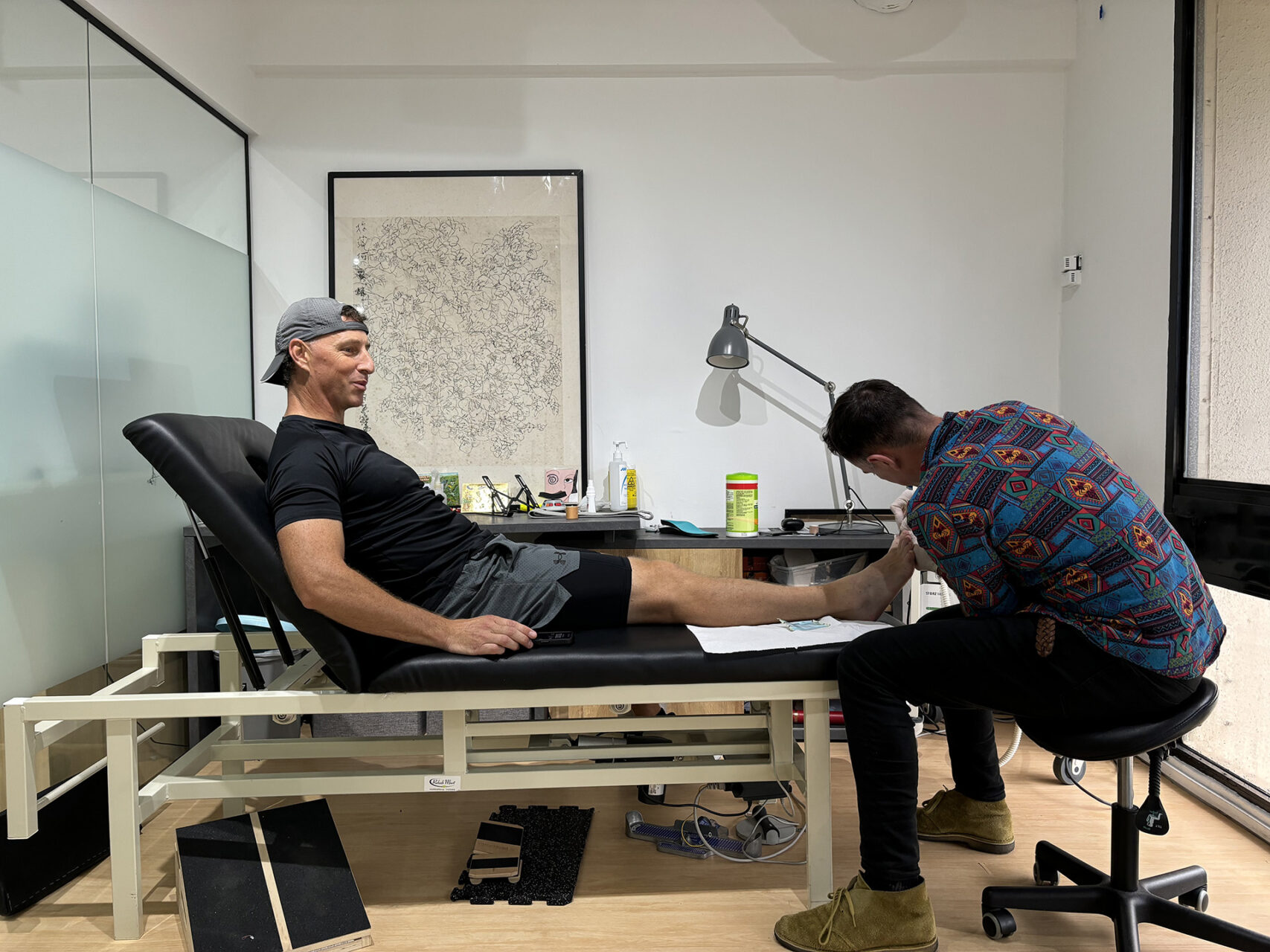
When To See A Podiatrist
You should see a doctor if you notice any changes in your nail’s appearance, such as discolouration, thickening or distortion. Pain or discomfort in the nail or surrounding skin is another clear sign that you should see a podiatrist.
People with a weakened immune system, including those on immunosuppressive medication, should be more vigilant. Conditions like diabetes or circulatory problems also increase the risk of complications from fungal nail infections. Early treatment can prevent complications and promote healthy nail growth. Your podiatrist may prescribe oral antifungal medication, laser treatment or other therapies to clear the infection.

Antifungal Management: How to Treat Nail Fungus
Advances in antifungal formulations have made topical treatments better at penetrating the dense keratin of the nail plate and reaching the underlying nail bed where the fungus lives. These new-generation solutions use enhanced delivery systems – penetration enhancers, sustained-release formulations and nail-adherent technologies – to increase contact time and improve efficacy.
Many of these treatments also have dual-action mechanisms that kill fungal pathogens and promote nail recovery. Fungal infection treatment usually requires antifungal medication to ensure complete eradication of the fungus. However, these advancements are most effective when combined with professional podiatric intervention.
A comprehensive approach starts with controlled nail debridement to remove infected material and may include mechanical or chemical nail reduction to enhance topical medication absorption. Podiatrists sometimes apply high-strength antifungal agents using advanced techniques like iontophoresis to increase penetration.
Ongoing care with regular follow-up appointments is vital to assess progress, address underlying factors such as excessive sweating, and implement preventative strategies to prevent reinfection. To prevent fungal nail infections, you must adopt self-help strategies such as keeping your feet dry, avoiding warm and damp conditions, and practising good foot hygiene. This multifaceted approach outperforms self-directed care by targeting the infection and its root causes and gives the best chance of complete and lasting resolution.
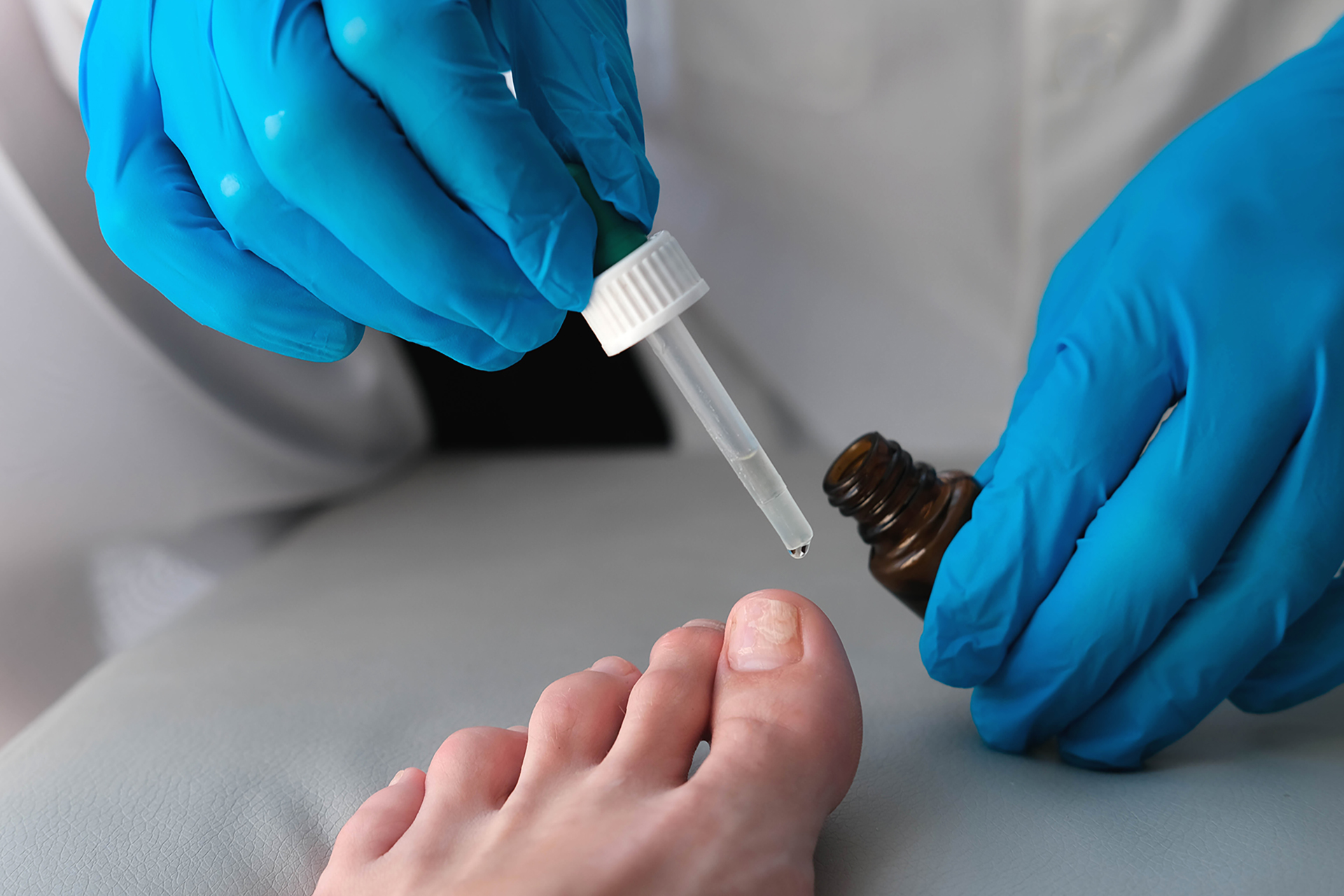
Prevention: Breaking the Cycle of Reinfection to Prevent Fungal Nail Infections
Treating a fungal nail infection is only half the battle. Preventing recurrence is the rest of the victory. Podiatrists offer patients an extensive list of essential preventative measures to keep healthy, fungus-free nails, such as:
- Keep your feet clean and dry, especially between toes
- Wear breathable footwear and moisture-wicking socks
- Use antifungal sprays or powders prophylactically in shoes
- Avoid walking barefoot in public areas like pools, showers and locker rooms
- Regularly inspect your nails for early signs of re-infection
- Practise proper nail hygiene, including straight-across trimming
- Do not share personal grooming items like nail clippers
- Wear shoes that fit well and are suited for different environments
Podiatrists may recommend ongoing preventative measures for patients with recurrent infections, including periodic professional treatments and specialised footwear modifications to reduce risk factors for toe fungus under the nail.

Path to Healthy Nails
After podiatric management, a healthy nail will grow back from the base, so monitoring nail health is essential. If you have fungus symptoms under the toenail, seek professional evaluation immediately. instead of trying over-the-counter treatments that don’t work. A podiatric assessment will identify the infection and start the proper management plan immediately, saving you time and hassle while giving better results.
Fungus under the toenail need not be a permanent or recurring problem. Even long-standing infections can be cleared with podiatric assessments and patented antifungal formulations. The combination of professional diagnosis, targeted interventions, and educational prevention is the most reliable way to restore and maintain nail health without toe fungus under the nail.
Toenail fungus can spread to other body parts, so early and effective treatment is key. Contact The Foot Practice today if you’re experiencing undernail toe fungus.

